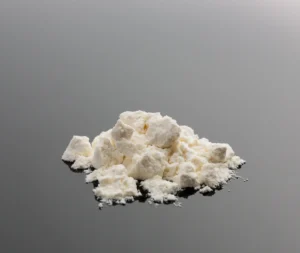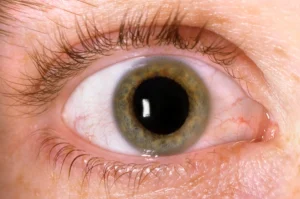If you or someone you love is addicted to crack cocaine and ready to quit, it’s important to enter a medically supervised crack detox program. Long-term crack use leads to serious health problems but trying to quit can be very difficult. Because the symptoms associated with crack cocaine withdrawal are intense, it is not a good idea to try to detox at home.
You need to be in a facility staffed by medical professionals and addiction specialists who can provide the medication and psychological support you need to get clean and move on to the next stage of the recovery process. In this article, we’ll discuss what crack cocaine is, why it’s so addictive and what happens during the crack detox process.
What is Crack Cocaine?
Cocaine is a highly abused drug that’s derived from the coca plant and it’s available in both powder and rock forms. The powdered form is simply referred to as cocaine or coke while the rock type is called crack cocaine or just crack. Crack cocaine is made by combining powdered cocaine with water and baking soda or another substance. The mixture is then boiled until it becomes a solid substance. Once it cools, it is broken up into smaller pieces and sold as crack cocaine. Crack cocaine is white, tan, cream, or light brown.
Since crack is smoked rather than snorted, it reaches the brain quickly and causes an intense high right away. The feeling is extremely pleasurable. However, this euphoria is short-lived and many people feel the urge to use the drug frequently so they can experience the euphoria again. This can quickly lead to tolerance and dependence.

Effects of Using Crack Cocaine
The effects of crack cocaine are quite similar to those of powdered cocaine but they tend to be more intense. The effects can vary depending on the purity of the cocaine used to make the crack. However, they typically include:
- Euphoria
- Increased heart rate
- Intense cravings
- Heightened alertness
- Decreased appetite
- Dilated pupils
Since crack cocaine is smoked, it is absorbed through the membranes of the lungs and it enters the bloodstream and brain in just 10 to 15 seconds. The user has no idea how potent the drug is and therefore, the likelihood of overdose is high. Overdosing on crack cocaine can result in increased heart rate, hyperventilation, convulsions, coma, and even death. Meanwhile, long-term use of crack can lead to irritability, anxiety, restlessness, mood changes, depression, and psychosis.

Why Crack Cocaine is So Addictive
Crack is stronger and more addictive than powdered cocaine. It is believed to be the most potent form of cocaine there is. Because crack is highly concentrated, people can become addicted after using it just one time. However, addiction is still more likely to occur with repeated use. A person who is addicted to crack needs to use it just to feel normal. They will need more and more crack to feel the effects and they will experience withdrawal symptoms if they try to quit or don’t have access to the drug.
This happens because crack causes the release of large amounts of dopamine in the brain. This is a chemical that makes you feel happy. If you use crack repeatedly, the body stops producing dopamine on its own and becomes dependent on the drug. Strong cravings coupled with an aversion to unpleasant withdrawal symptoms can make quitting cocaine very difficult. Even in the face of negative consequences in almost every aspect of their life, a person who is addicted to crack cocaine will continue using. The only way to overcome addiction is to undergo detox and then enter rehab.
Signs of Crack Abuse
Knowing the signs that someone is abusing crack cocaine is important. It can enable you to talk to them about their behavior and encourage them to get help. People who are addicted to other drugs can often hide it. However, this isn’t usually the case with crack.
Individuals who are struggling with crack cocaine addiction need to take smoke breaks every 15 to 20 minutes since the effects wear off so quickly. They may also be so preoccupied with the drug that they can’t carry on a normal conversation. They are also likely to be hyperactive and overconfident. Other signs of crack cocaine abuse are:
- Dilated pupils
- Faster breathing
- Aggression
- Restlessness
- Burns on the fingers
- Unusual irresponsibility
- Blistered or cracked lips
Because of how strong and addictive crack cocaine is, any level of use should be of concern. An individual who is addicted to crack will do anything to get their hands on the drug even if it means stealing money from friends and family or otherwise breaking the law. Eventually, they won’t care about the safety of themselves or others. That’s why it’s so important for anyone using crack cocaine to seek out a reputable cocaine detox facility.
A person who decides to quit using crack will experience signs of cocaine withdrawal within a few hours of their last dose. This is because the brain can no longer function without the drug. Crack cocaine withdrawal symptoms can be both psychological and physical and they include intense cravings, fatigue, and unusual sleep patterns. With professional treatment, people addicted to crack can be relatively comfortable during withdrawal and they can go on to live a drug-free life.
How to Quit Cocaine Safely
The first step in recovering from crack cocaine addiction is to get the drug out of your system completely. This is called detoxification and it’s a necessary part of getting better. However, without the right support, it can also be very unpleasant and the risk of relapse is high.
By enrolling in a medically supervised detox program, you’ll experience less intense withdrawal symptoms and ease your transition into a drug-free life. Healthcare professionals can provide both medications and nutrients to ease acute withdrawal symptoms during the crack detox process.
Crack withdrawal symptoms can include:
- Depression
- Nightmares
- Extreme cravings
- An inability to feel pleasure (anhedonia)
- Fatigue
- Irritability
- Mood disorders
- Suicidal ideations
The professionals at drug treatment facilities develop individualized strategies for dealing with these symptoms. While it is recommended that some drugs be tapered off during detox, people addicted to crack cocaine need to quit cold turkey with medical supervision. Unlike opioids for which there are replacement therapies, there is no substitute for crack cocaine. You simply have to stop taking the drug and allow it to leave your body.
A Generalized Crack Detox Timeline
A number of factors help to determine how a crack cocaine user will experience withdrawal. These include their physical and mental health, the amount of crack they used, and how long they used it. Generally, acute withdrawal lasts for three to seven days. However, some people experience protracted withdrawal where symptoms weaken but continue for months or even years.
Withdrawal typically starts within one to 72 hours after the last use and the symptoms may reach their peak during this time. You may experience body aches, auditory and visual hallucinations, and paranoia. The paranoia may be extreme during the first 24 hours but it will subside after three days. Hallucinations are rare but if they do occur, they too will start to subside within 72 hours.
After this, other symptoms will set in. As you go through the first week, you may experience lethargy, irritability, fatigue, and insomnia. After seven days have passed, you may start to experience strong cravings for crack along with anxiety and mild depression. This is because the brain will not yet be producing enough dopamine for you to feel strong, positive emotions. Cravings and other physical symptoms will be reduced by the third and fourth weeks but mood swings, depression, and lack of motivation may persist through the first month.
This is just an example of a crack detox timeline. This means you may experience different symptoms at each stage and there’s no easy answer to the question “how long does it take to detox from crack?”. When you enter a detox facility, you’ll be treated for the symptoms you present.
Possible Medical Complications
Crack cocaine users can experience mild to severe mental and physical complications during withdrawal. These include:
- Cardiovascular problems such as elevated blood pressure, increased heart rate, and chest pain
- Neurological problems including seizures
- Pulmonary disorders such as shortness of breath, difficulty breathing, and coughing up blood
- Clinical depression characterized by frequent feelings of sadness, angry outbursts, loss of interest in hobbies, lack of energy, and problems with sleep and appetite
- Suicidal thoughts resulting from severe depression. Some people make suicidal attempts.

How to Detox from Crack: Why It’s Not Advised to Detox at Home
Many people want to undergo crack detox in the privacy of their homes. However, this is never a good idea. It’s very difficult for anyone to predict how your brain and body will respond when they are deprived of crack and symptoms can vary widely. Given the possible complications we outlined above, the safest option is to enroll in a detox facility and avail yourself of expert care.
People who try to detox at home often fail because they lack professional support and it’s easy to relapse when the cravings kick in. They may also binge in an effort to relieve their discomfort and this can increase the risk of fatal overdose. When you’re in a medical facility, trained professionals will be on hand 24/7 to assess you, monitor your physical and psychological reactions, and treat you accordingly.
Some of the drugs that can be used during crack detox include:
- Acetaminophen to manage aches and pains
- Propranolol for anxiety
- Clonidine for anxiety and high blood pressure
- Vistaril for anxiety
- Amantadine to manage cravings
- Bromocriptine for cravings
- Gabapentin for insomnia, seizures, restless leg syndrome, and anxiety
- Beta-blockers to reduce blood pressure
- Anticonvulsants to reduce seizures
Dual Diagnosis and Withdrawing from Multiple Drugs
Some people who use crack have other mental health issues. These psychological problems may be the underlying cause of their addiction, or they may occur because of how the drug affects the brain and central nervous system. This is called a dual diagnosis and both addiction and the other condition need to be treated at the same time.
Some people along abuse more than one harmful substance. If you’re using crack cocaine along with alcohol or an illicit drug, you’re likely to cause more harm and your withdrawal symptoms may be more severe.
If you have a co-occurring mental health disorder or you’re addicted to multiple substances, you need to choose a detox facility that can handle all the problems you face. This will ensure you get all the help you need during the crack detox process.
What Happens After Crack Detox
Detox is just the first stage of the recovery journey. After you get clean, you need to attend rehab and learn how to stay clean. Both outpatient and inpatient treatment programs are helpful and you should work with your treatment team to decide which option would be best for you. In any case, you’ll likely benefit from individual and group behavioral therapies such as contingency management or cognitive-behavioral therapy.
Crack Cocaine Detox in Orange County
If you or a loved one is struggling to stop using crack cocaine, the team at All In Solutions Detox in Simi Valley is here to help. Whether you’re ready to enter our luxury detox center or you want to learn more about the services we offer, call our toll-free number and chat with a highly trained staff member.
We’ll provide a safe environment in which you can detox from crack cocaine and any other substances you may be using. If you live in the Westlake, Woodland Hills, Thousand Oaks, or Santa Monica communities, you’ll find us nearby but we welcome clients from across the country.
We’ll assess you and then come up with a personalized detox and rehab plan. No two clients are the same even if they’re addicted to the same substance so we make sure to cater to the unique needs of each person. Your call is confidential and absolutely free so don’t delay in contacting us.





